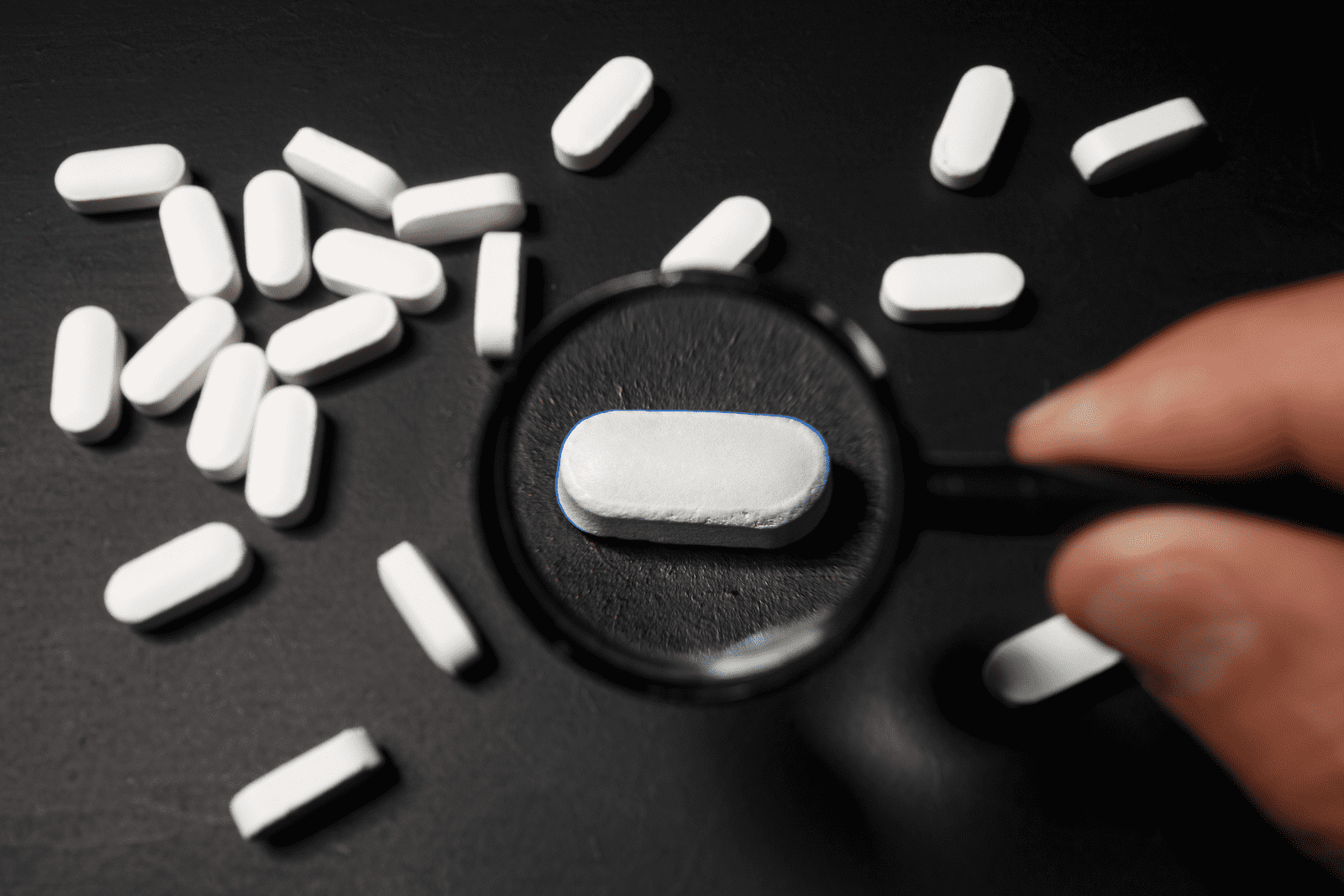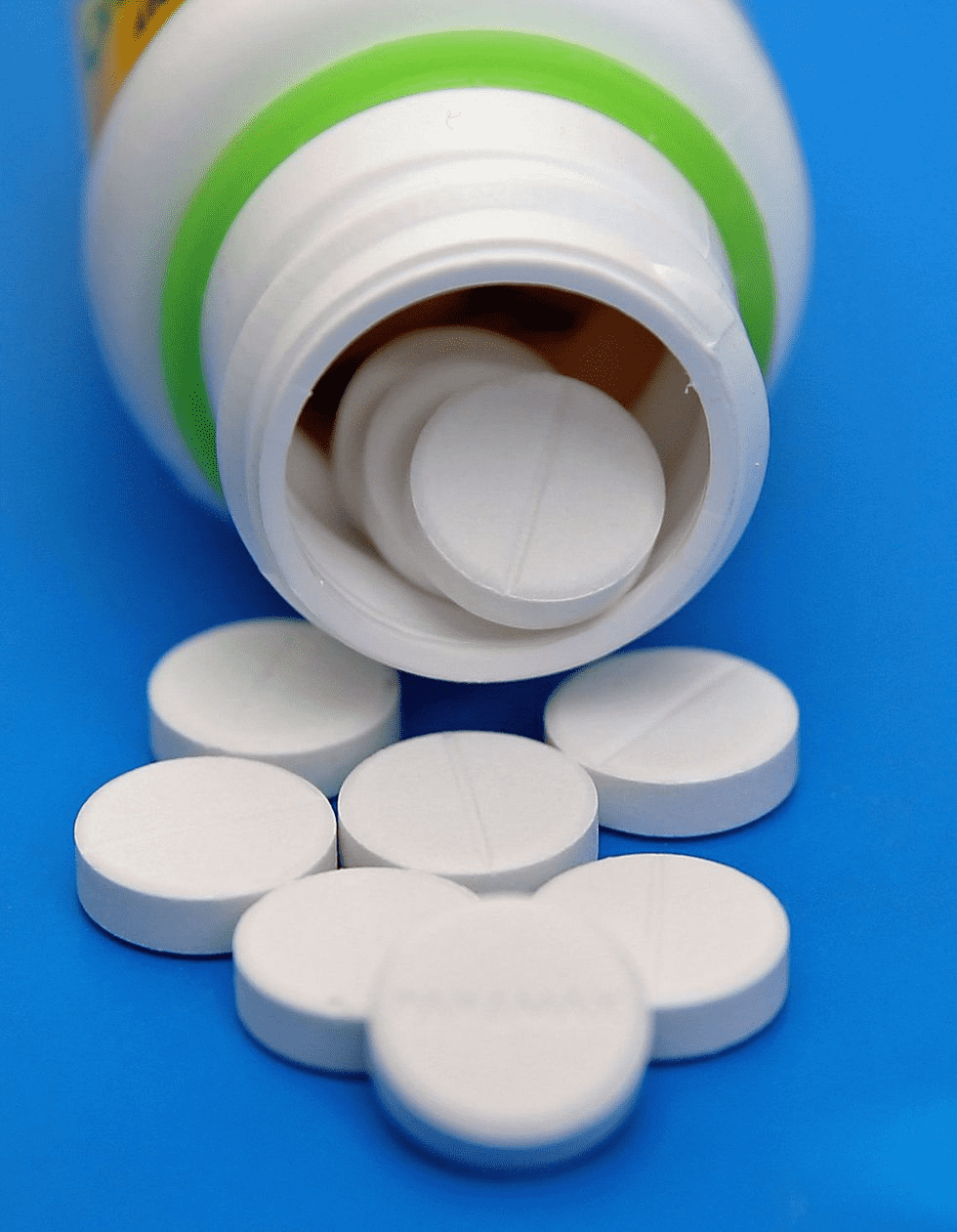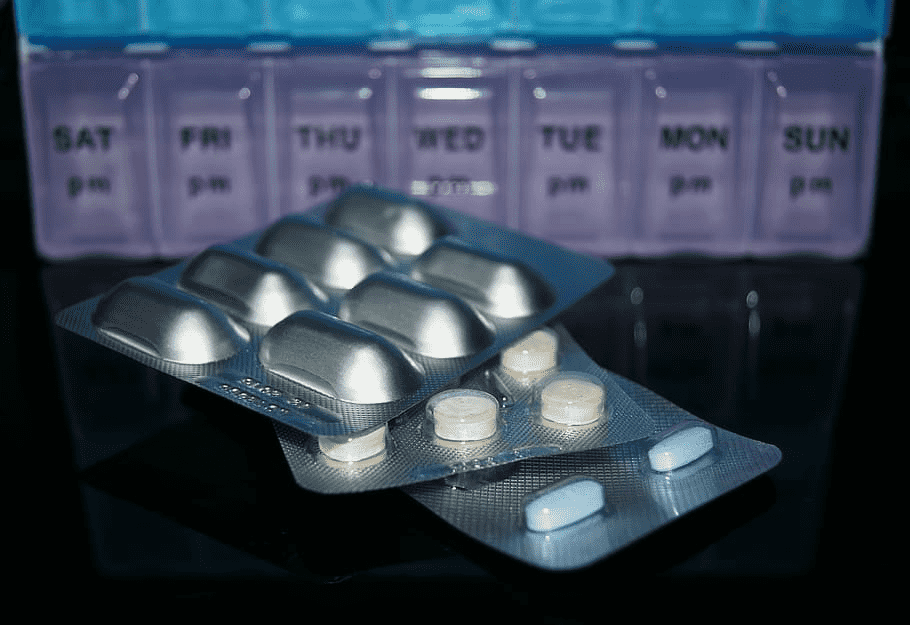Four Must-Know Differences Between Enteric and Film Coating
Enteric-coated and film-coated tablets are two types of oral medication forms commonly used in the pharmaceutical industry. Film-coated tablets contain a thin layer of coating that dissolves in the stomach. In contrast, enteric-coated tablets have a unique coating that resists stomach acid and dissolves in the small intestine.

Why Should You Know The Differences Between Enteric-coated And Film-coated Tablets?
Both patients and medical professionals should be aware of the distinction between enteric-coated and film-coated tablets. Here are a few justifications:
Correct Administration
To guarantee that a patient's medication is safe and effective, they must know how to take it correctly. An enteric-coated tablet may not function as intended if a patient consumes it on an empty stomach or with food after receiving a prescription for one. Patients can take their medications more effectively if they know the distinction between enteric-coated and film-coated tablets.
Avoiding Side Effects
If drugs are not prepared properly or taken as directed, they may cause stomach irritability or other adverse effects. Patients who are aware of the distinction between enteric-coated and film-coated pills can choose their medications wisely and prevent unpleasant side effects.
Medication Interactions
To give patients the best care, healthcare workers should understand how different medicines can affect each other. A good understanding of their differences helps them avoid problems and make better decisions about which medicines to use together.
Medication Safety
Patients and medical professionals are extremely concerned about medication safety. Ensuring patients receive safe and efficient therapy can be made easier by being aware of the differences between enteric-coated and film-coated tablets. For instance, a patient may require a particular kind of tablet formulation if they have a digestive disorder that affects their stomach or small intestine in order to prevent aggravating their illness.
What Are Enteric-coated Tablets?

Enteric-coated tablets are made to withstand disintegration and dissolution in the stomach's acidic environment. The enteric coating is often made of pH-sensitive polymers that disintegrate only at a pH of 6.0 or higher. Their purpose is to release the active ingredients in the small intestine's more alkaline environment. Here they can be more efficiently absorbed into the bloodstream. Enteric-coated tablets are commonly used to protect drugs that are sensitive to stomach acid or that can cause irritation to the stomach lining.
Advantages and Disadvantages of Enteric-coated Tablets
Below are the advantages and disadvantages of enteric-coated tablets;

Advantages:
- Prevent the active components from deteriorating and becoming inactive in the stomach's acidic environment.
- Ensure the active substances reach the small intestine whole so they can enter the bloodstream more successfully.
- Reduce the likelihood of gastric irritation and unfavorable effects brought on by medications coming into contact with the stomach lining directly.
- Improve patient compliance and enable once-daily dosing by using extended-release properties.
Disadvantages:
- Tablets with an enteric coating typically cost more than tablets with immediate release.
- The coating procedure may call for professional machinery and can make the manufacturing process more complex.
- The delayed release of the drug may result in a slower onset of action, which may not be desirable for certain drugs or conditions.
- In individuals with gastrointestinal issues, in particular, the coating can occasionally prevent patients from absorbing drugs.
Examples of drugs commonly available in enteric-coated form
There are many drugs that are commonly available in the enteric-coated form, including
- Aspirin: Used for pain relief, fever reduction, and anti-inflammatory purposes
- Proton pump inhibitors (PPIs): Used to treat gastroesophageal reflux disease (GERD) and peptic ulcers
- Nonsteroidal anti-inflammatory drugs (NSAIDs): Used to relieve pain and inflammation, such as ibuprofen, naproxen, and diclofenac
- Antibiotics: Such as erythromycin, doxycycline, and tetracycline
- Fish oil supplements: Used for their anti-inflammatory and heart-protective effects
What Are Film-coated Tablets?
Film-coated tablets, in contrast, have a thin coating placed on the tablet to improve its look, shield the medication from moisture and light, and make ingesting the tablet easier. The film coating typically consists of a blend of polymers, plasticizers, and pigments that give the tablet surface the desired color, texture, and gloss.

Depending on the type and thickness of the coating employed, film-coated tablets can be made to deliver the medicine either immediately or over an extended period of time. Film-coated tablets are a particular kind of oral medicine formulation that has a compressed tablet core that is then thinly coated with a glossy, water-soluble polymer, like hydroxypropyl methylcellulose. The coating is usually colored to enhance the appearance of the tablet and facilitate identification by patients.
Different Types of Film Coating Tablet Releasing
The primary goal of film coating is to shield the tablet core from external elements including moisture, light, and air that can degrade the drug's efficacy and stability. The film coating can also make swallowing easier by masking the drug's unpleasant taste or odor.
In addition, by regulating the rate and site of drug release in the gastrointestinal tract, film coatings can be employed to alter the release profile of the drug. This can be done by adding specific polymers, like ethylcellulose or derivatives of acrylic acid, that are resistant to dissolving in the stomach's acidic environment but easily dissolve in the small intestine's more alkaline environment. Film-coated tablets can offer sustained-release, extended-release, or delayed-release features by altering the drug's release profile.
How Film Coating Works
Applying a thin layer of a polymer substance to a solid substrate is a procedure known as a film coating. It is frequently used in the food and pharmaceutical industries to enhance the look, flavor, and stability of products. The procedure is broken down into multiple parts, including preparing the substrate, applying the coating, and curing the coating.
- The substrate must be ready before beginning the film coating process. Cleaning the surface of the substrate is necessary to get rid of any particles, dust, or other impurities that could hinder the coating material's ability to adhere. The material must also be dried to ensure that the coating substance adheres properly.
- The coating substance is then applied as the next step. This is commonly done via a spray-coating process, where the coating material is atomized and sprayed onto the substrate using a spray gun. The coating material is typically a polymer solution or dispersion, which may contain additives such as plasticizers, pigments, or surfactants to improve the properties of the coating.
- Once the coating material has been applied, it must be cured to form a firm, continuous film. The coating may need to be dried at room temperature or heated in an oven to hasten its curing process. The curing time and temperature will depend on the specific coating material and the thickness of the coating.
Aqueous-based coating and solvent-based coating are the two primary categories of the film coating process.
- In solvent-based coating, the coating material is dissolved in an organic solvent, which is subsequently evaporated to leave a solid coating on the substrate.
- Aqueous-based coating involves dispersing the coating substance in water, which is then evaporated to leave the substrate with a solid coating. Because of their higher safety profile and reduced environmental effect, aqueous-based coatings are typically used.
Advantages and Disadvantages of Film-coated Tablets
Below are the advantages and disadvantages of film-coated tablets;
Advantages of film-coated tablets:
- Improved appearance and marketing appeal due to the ability to add color, logos, and other branding elements
- Improved patient compliance due to a smooth and easy-to-swallow surface
- Reduced unpleasant taste or odor of the medication due to the ability to mask it with the coating
- Protection of the stomach lining from potential irritation caused by the drug
Disadvantages of film-coated tablets:
- Increased cost due to the additional processing steps required for the coating
- Potential for slower drug release due to the additional barrier provided by the coating, which may be problematic for certain formulations or patient populations
- Increased risk of coating defects or inconsistencies that may affect the drug's performance
- Increased environmental impact due to the disposal of the coating material, particularly for solvent-based coatings.
Examples Of Drugs Commonly Available In Film-coated Form
Some examples of drugs that are commonly available in the film-coated form include:
- Aspirin
- Ibuprofen
- Paracetamol
- Acetaminophen
- Metformin
Four Differences Between Film and Enteric-Coated Tablets
Differences in appearance and texture

However, there are some important differences between these two types of coatings, including their appearance and texture.
Here are some key differences:
Appearance:
- Enteric-coated tablets have a glossy, smooth appearance, while film-coated tablets have a matte, slightly rough appearance.
- Enteric-coated tablets may have a clear or slightly yellowish appearance, while film-coated tablets may come in a variety of colors.
Texture:
- The film of film-coated tablets is flexible and sticks closely to the tablet surface, making the tablet easier to swallow and often giving it a polished look.
- Enteric-coated tablets often feel slightly thicker and harder compared to film-coated ones. The coating is designed to resist stomach acid, so it's usually less smooth and not as glossy. It may feel more rigid or brittle because it's made to break down only in the intestines.
Different drug release profile and absorption
Drug Release Profile:
- Enteric-coated tablets are designed to delay drug release until the tablet reaches the small intestine, where the pH is higher and more alkaline. This can result in a slower onset of action and a more prolonged effect.
- Film-coated tablets are not specifically designed to delay drug release, and the drug may begin to be released as soon as the tablet is swallowed. This can result in a more rapid onset of action.
Absorption:
- Enteric-coated tablets may be absorbed differently than non-enteric-coated tablets, as they are designed to release the drug in the small intestine instead of the stomach. This can affect the bioavailability (the amount of drug that actually enters the bloodstream) of the medication.
- Film-coated tablets are generally absorbed in a similar manner to non-film-coated tablets, as the coating is primarily designed to make the tablet easier to swallow and improve its appearance.
Three Factors to consider when choosing between the two types of tablets
There are a number of things to take into account while deciding between enteric-coated and film-coated tablets. These consist of:
Medication characteristics:
While some medications may not need any special coating, others may need an enteric coating to protect them from stomach acid or to achieve a certain release profile. When deciding between the two types of tablets, it is crucial to take the medication's features into account.
Cost:
Due to the additional production procedures and materials needed for the coating process, enteric-coated pills may be more expensive than film-coated tablets. Patients who purchase their medications out of pocket may want to take this into account.
Accessibility:
Since not all medications come in both enteric-coated and film-coated forms, it could be important to make a decision based on what is readily available.
In the end, selecting between enteric-coated and film-coated pills should be done so in consultation with a healthcare professional or pharmacist who can offer advice based on the needs and circumstances of the specific patient.
Consulting with a healthcare professional before making any changes to the medication regimen
It's crucial to consult with a healthcare provider before changing your medication regimen, especially when using enteric-coated or film-coated pills.
With the aid of a unique coating, enteric-coated tablets can pass past the stomach and dissolve in the small intestine, where they are then absorbed into the bloodstream.
The purpose of this coating is to shield the drug from stomach acid, which could reduce or change its efficacy. An enteric-coated tablet can lose its coating if it is broken or crushed, allowing the medication to be released into the stomach and possibly causing adverse side effects.
Similar to film-coated tablets, film-coated tablets feature a thin layer of coating that helps to hide the taste of the medication while also facilitating swallowing. The release and absorption of the medication may be hampered if a film-coated tablet is crushed or broken, which may reduce its effectiveness or increase the risk of side effects.
In all situations, it's crucial to adhere to the usage guidelines and refrain from changing the tablet's shape without first consulting a medical expert. They can offer advice on how to take the prescription most effectively, including whether it can be crushed or chopped, and whether an alternative form of the drug is available.
Keep in mind that while the purpose of medication is to improve your health, improper use can be harmful. Always consult your doctor before changing your prescription schedule, especially if you're using specialist medications like enteric-coated or film-coated pills.
Cooperate with iPharMachine’s Tablet Coating Machines to Improve Your Coating Efficiency
The pharmaceutical industry relies heavily on tablet coating technology because it enhances the look, flavor, and stability of tablets. Enteric-coated and film-coated tablets are the two most common forms of tablet coatings. As a professional pharmaceutical equipment supplier, iPharMachine provides various types of tablet coating machines.
Tablet Coating Machine BYC-1000
The Tablet Coating Machine BYC-1000 is a superb illustration of modern tablet coating technology from iPharMachine.
The exterior surface of Chinese and Western medicine tablet cores can be coated with a layer of sugar or film using this machine. It is produced by reforming the traditional common sugar-coating machine and combines strong current, weak current, hydraulic pressure, and pneumatics.
The primary machine (the original sugar-coating machine), a variable room-temperature hot air system, an automatic liquid and air feeding spray system, etc. make up the majority of this piece of machinery.
Frequency conversion allows for speed control of the primary motor. The high-pressure air flow creates a negative pressure in the sprayer's inner cavity when it operates, which allows the coating liquid to be atomized and sprayed on the surface of the tablets under the influence of atmospheric pressure.
The tablets are continuously moving in the coating pot at the same time to ensure that the coating liquid coats the tablet cores uniformly.
Let’s get a bit technical.
The coating pot has a diameter of 1000 mm and a production capacity of 50-75 kg per time. It can adjust the temperature from normal to 80℃ and has a motor speed range of 0-32 r/min, with a main motor power of 1.5 kW and a blower power of 200 W.
The Tablet Coating Machine BYC-1000 has a self-provided air compressor, an internal heating power of 2.4 kW, and an external heating power of 2 kW.
It has an angle of inclination between 15° to 45° and a solenoid valve with a size of G1/8". The machine's dimensions are 1300×1000×1680mm (LWH).
Tablet Coating Machine BYC-1250
Another superb and amazing coating machine from iPharMachine that pharmacists must need is the Tablet Coating Machine BYC-1250.
How does this machine work?
The coating pot turns clockwise. The frequency converter controls how quickly it rotates. In order to evenly coat the rolling tablet cores, coating liquid is sprayed by the sprayer onto the tablet cores in the coating pot.
In the meantime, heated air is given to the coating pot to remove any remaining water from the tablet's surface, producing coating tablets of the highest quality.
Tablets produce the best flow curve in the pot when controlled reasonably along with a constant linear speed and a fixed guide plate, which satisfies the technical criteria of film coating.
Now, let’s get more technical.
The coating pot has a diameter of 1250 mm and can produce 80 to 150 kg of material per batch. The temperature can be adjusted from normal temperature up to 130℃, and the motor speed can range from 1.5 to 28 r/min.
The main motor has a power of 2.2 kW, while the blower power is 370 W. The tank has a volume of 10L and the internal heating power is 4 kW, while the external heating power is 2 kW.
The compressed air consumption is 300L/min, and the compressed air pressure ranges from 4 to 6 kg/cm2.
You can have any of these machines for your coating.
Read More:
Film Coating VS Sugar Coating: What's The Difference
Leave your comment
Also Offers


Containment Automatic Capsule Filling Machine SFK-703

Fully Automatic Dosator Capsule Filling Machine CZ-40

Our Team
As an expert in the pharmaceutical and pharmaceutical packaging industry, iPharMachine has provided solutions for hundreds of pharmaceutical and health product manufacturers for 17 years. By visiting customers, we get good reviews from our customers.
- info@ipharmachine.com
- English Español Deutsche









